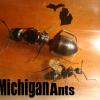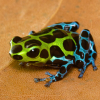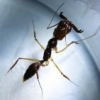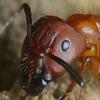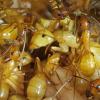Super interested to see were this thread leads to. I myself have a couple different colonies of varying Camponotus. I can personally attest to the location being a key factor in how well a queen places among her peers.
For instance, i've caught queens of the same species (mainly, but not limited to Camponotus) from both the Upper and the lower peninsula of michigan. First thing i noticed is that arboreal colonies are smaller and more abundant in numbers as you get closer to the suburbs, with the opposite being in more rural areas.
This leads me to believe that perhaps queens and colonies located in more urban areas produce larger batches with weaker queens. This may allow them to have a better chance of founding a colony, but could greatly reduce the life span/expectancy of the queen. In the north, colonies were less likely to be destroyed by human invasion or construction, so perhaps the colonies are able to grow larger and produce healthier offspring due to their healthier life. If you were to relate this to how some other species of insects and plants work, the urban colonies may be trying to reproduce more to guarantee their future existence.
Another factor that leads me to believe that northern queens are built stronger is that they were bulkier then there southern sisters. If i'm not mistaken, some other species have been documented doing this as well. They'll sacrifice the amount of energy given to reproductive brood in order to have more.
All of my queens get the same treatment which is a mix of Stress Training and it shows which queens do better. My northern queens took to stress easier, were able to survive colder temps, and just produced better in general. Now, this wasnt really a test i was actively conducting, but it was eye opening when it comes to location of collection and how well my queen may do.
I stress train all of my ants. Due to the nature of this hobby, i train my ants to be used to indoor day/night light cycles, vibrations, shaking and tube rolls. I don't want my ants to be used to total darkness and no movement throughout the founding stages, and then everything changes when they're sold or passed on to a new hobbyist. This gives me peace of mind knowing that whoever receives my ants will have a colony that won't die after a couple days in new hands.
Loops
Edited by Loops117, July 6 2017 - 6:34 AM.


